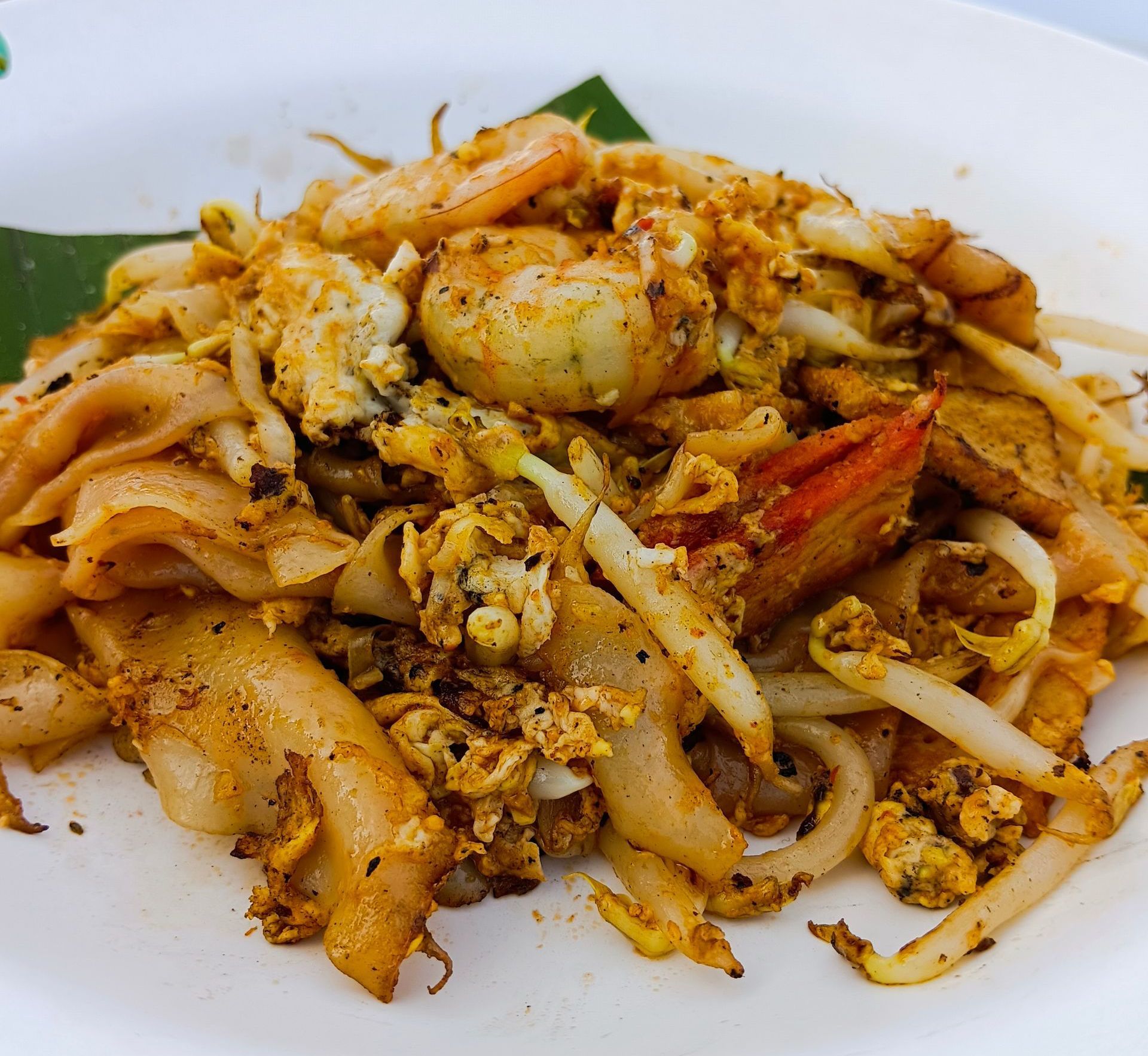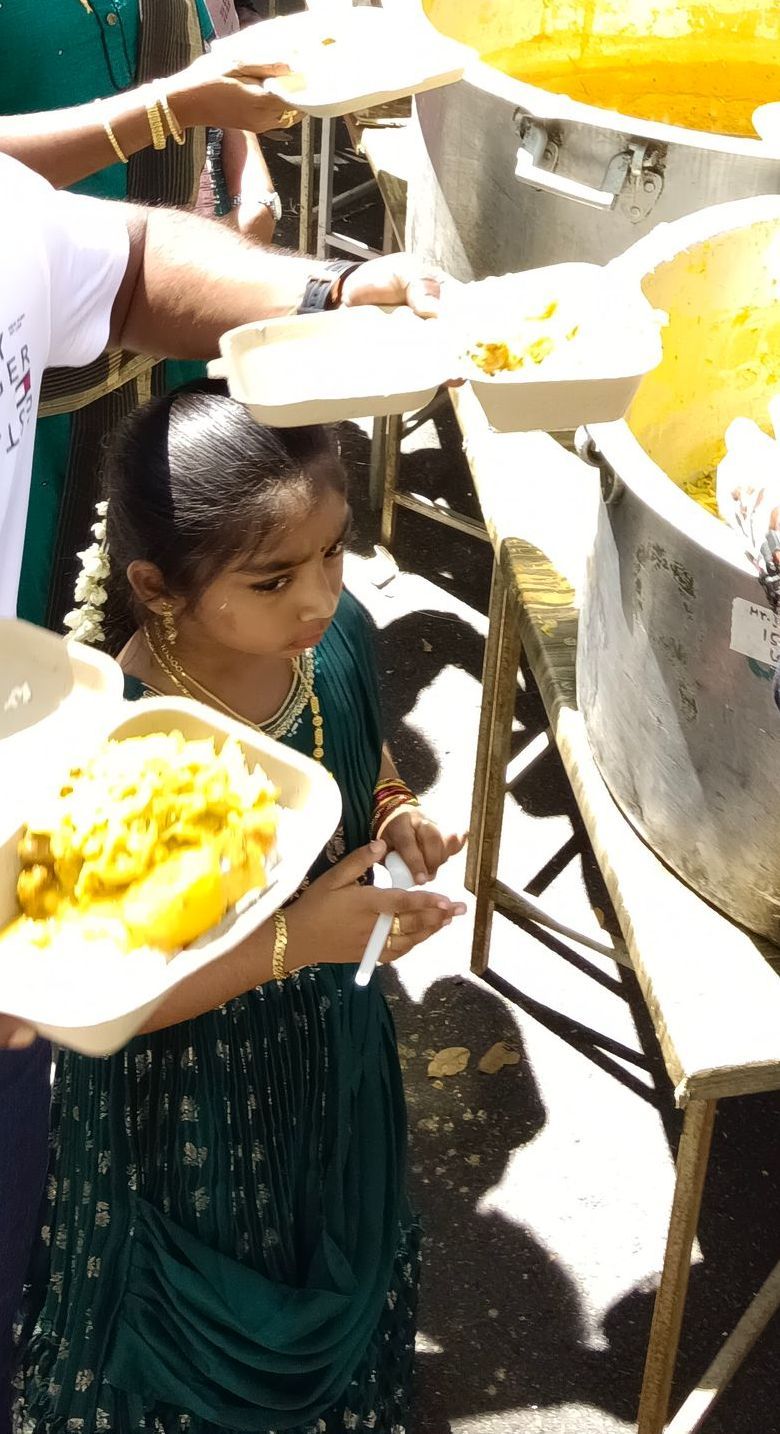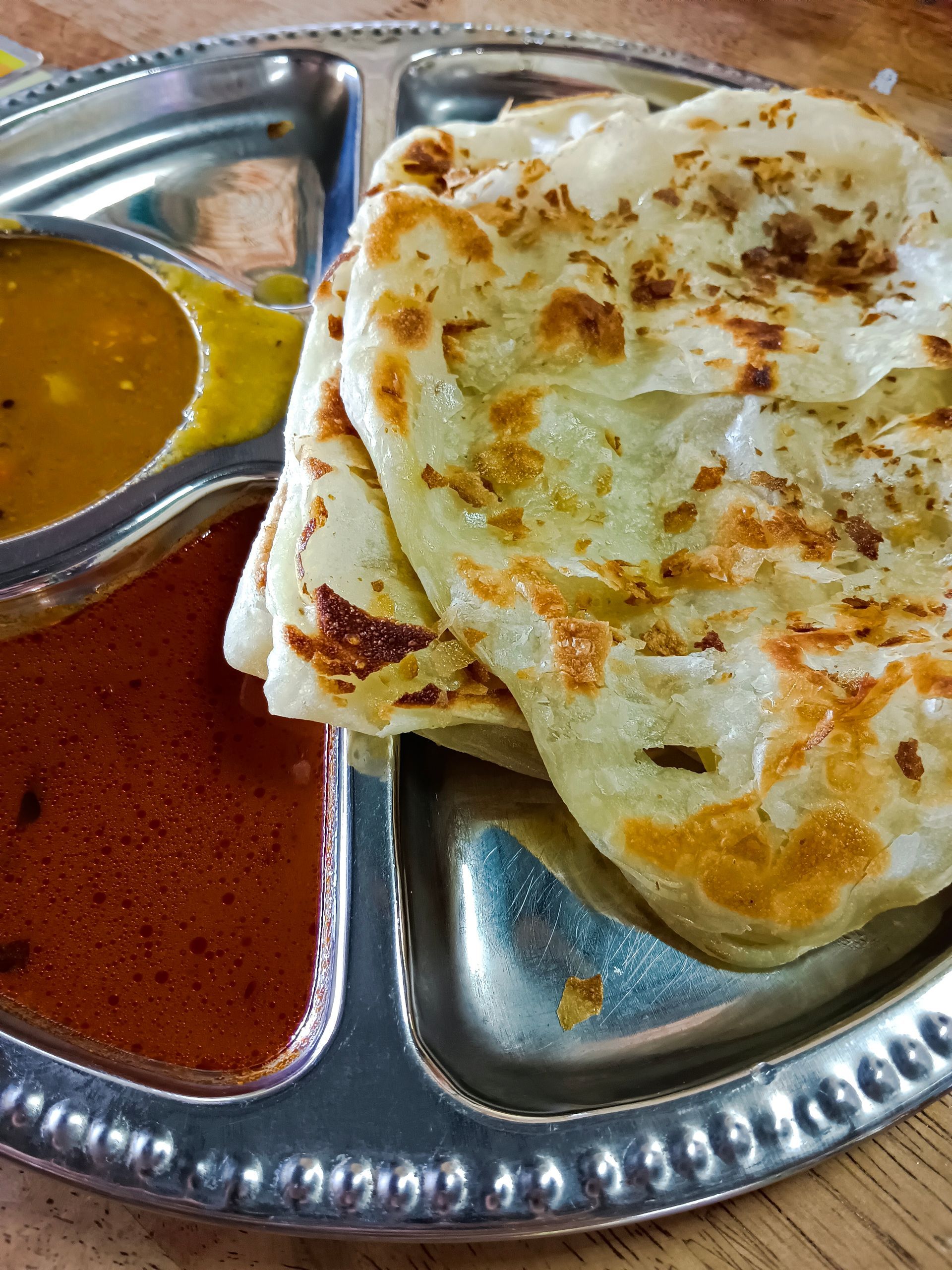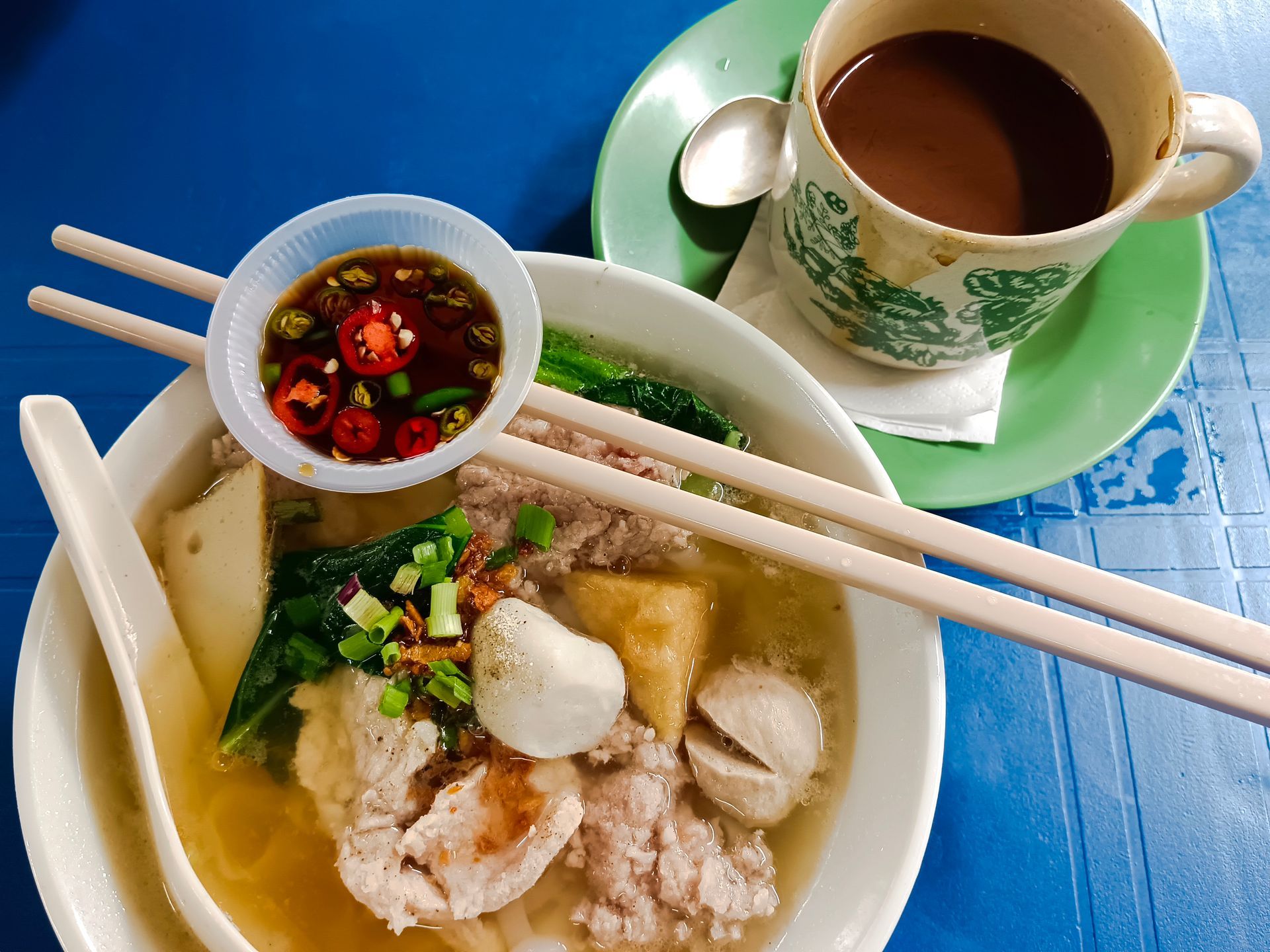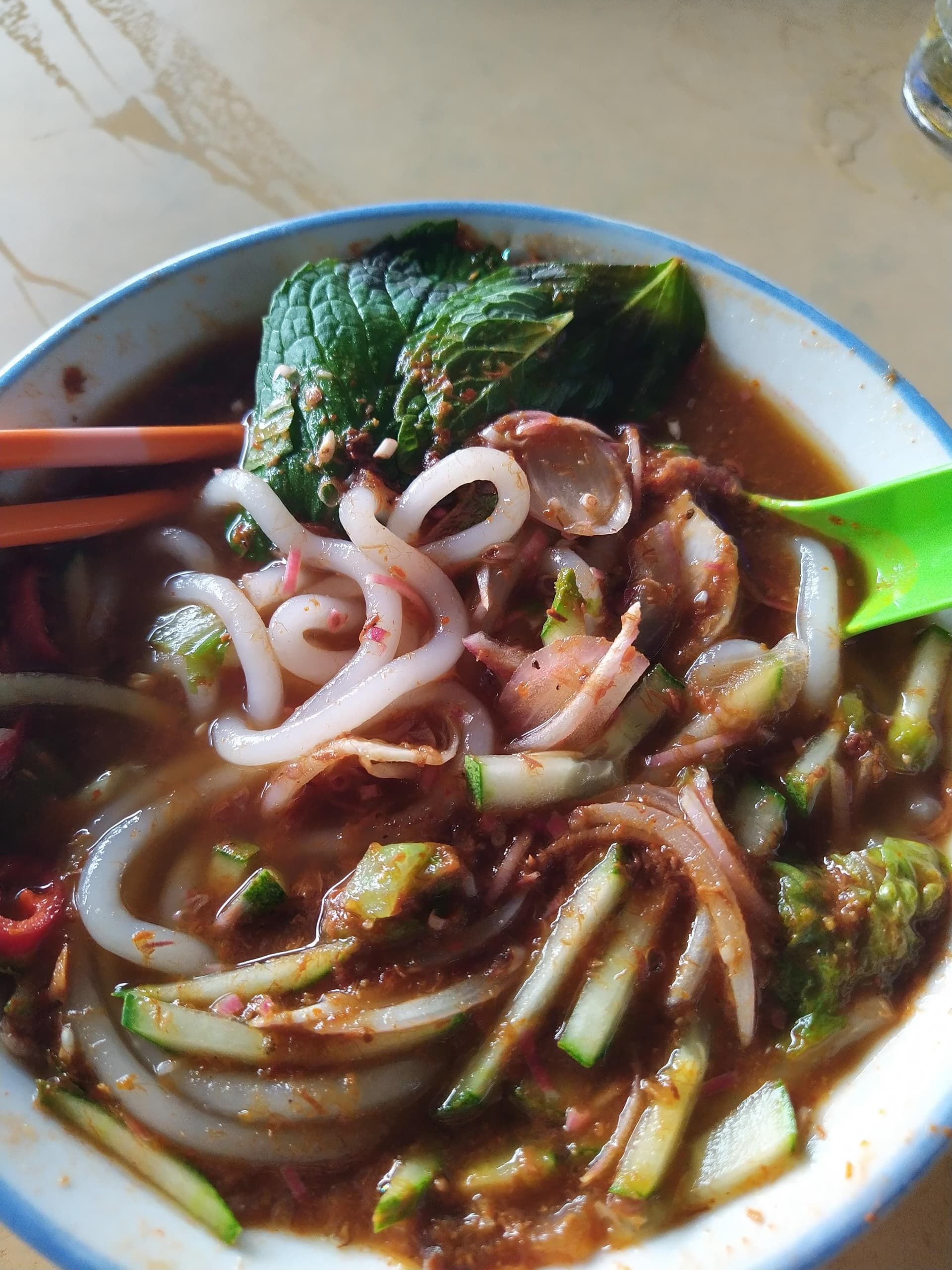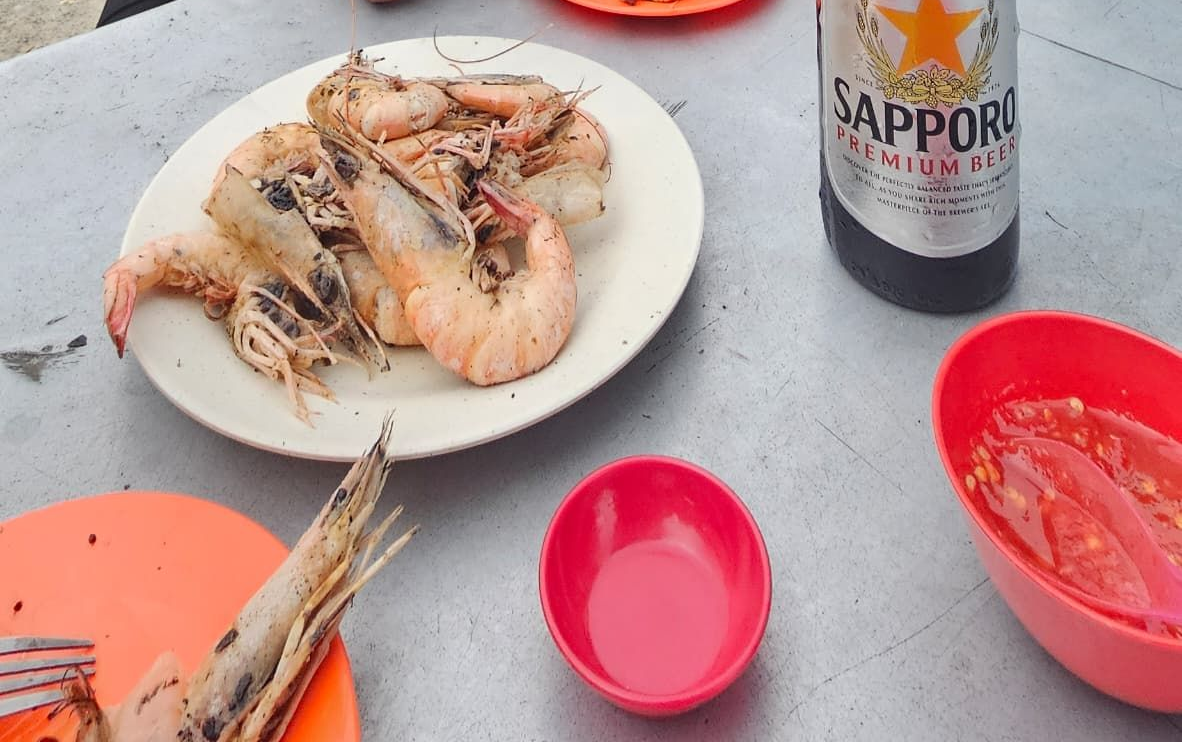By Sindri Traustason
•
January 1, 2025
If Char Kway Teow is Penang’s smoky wok-fired superstar and Asam Laksa its bold, tangy icon, then Koay Teow Th’ng is the quiet soul of Penang street food. A bowl of silky flat rice noodles (koay teow) served in clear, flavorful broth, it is the comfort food locals turn to when they want something warm, light, and soothing. If you’re visiting Penang and eager to taste the local favourite away from the crowds, join our Street Bite Tours for a guided motorbike ride to the true family-run stalls. Scroll down for a home-style recipe, or book your experience nowt o taste the best in Penang. Book here! The Essence of Koay Teow Th'ng Koay teow th'ng, a soothing and light noodle soup, is a staple in Penang’s culinary heritage. This dish features flat rice noodles served in a delicate, clear broth made from pork bones and dried seafood. The soup is topped with a combination of shredded chicken, prawns, fish balls, and fresh vegetables, creating a perfect balance of flavors. Lightly seasoned with soy sauce, garlic, and a hint of sesame oil, this option offers a comforting, refreshing, and lighter alternative. A Dish with History Koay teow th'ng traces its origins back to the Teochew Chinese community, who brought their culinary traditions to Penang. Originally a simple, nourishing dish, it was designed to be both affordable and filling. Over time, Penang’s hawkers have refined their recipes, creating the delicate and flavorful version we know today. A Taste of Tradition The broth is usually simmered for hours with chicken or pork bones, dried flounder, and aromatic herbs. The noodles are paired with delicate slices of meat, fish balls, or pork offal, topped with fresh lettuce, spring onions, and sometimes a spoonful of crispy fried garlic oil. Some hawkers add a side of duck meat for extra richness. Why It’s Special? Every bowl tells a story. Recipes are often passed down from generation to generation, and subtle differences — the depth of the broth, the springiness of the fish balls, or the aroma of garlic oil — make each stall’s version unique. Where to eat the best Koay Teow Th’ng in Penang? When you are in Penang, we can guide you to some truly authentic Koay Teow Th’ng stalls — the kind locals guard like secrets, far away from the tourist routes. Until then, if you’re already dreaming of the broth and noodles, you can experiment with the home-style recipe we’ve included below. Meanwhile, feel free to explore our food experiences and book in advance — and if your plans change, you can cancel at no cost. Penang Koay Teow Th’ng Quick Recipe (Home Version) Ingredients Flat rice noodles (koay teow) – 200g Chicken or pork bones – 500g 1 dried flounder (optional, for authentic flavor) 3 cloves garlic, smashed 5–6 white peppercorns 200g chicken or pork slices (blanched) 6–8 fish balls Lettuce leaves, shredded Spring onion, chopped 2 tbsp garlic oil (fried garlic + oil) Light soy sauce & salt, to taste Method Simmer bones, dried flounder, garlic, and peppercorns in 1.5L water for 2–3 hours. Strain broth. Blanch noodles briefly, then divide into bowls. Add chicken/pork slices and fish balls. Pour hot broth over noodles. Garnish with lettuce, spring onion, and a spoonful of garlic oil. Serve piping hot — the Penang way! While you could try making it at home, no recipe can fully replicate the balance and depth of flavor created by Penang’s master hawkers. That’s why food lovers travel here: to sit at a street-side stall, surrounded by locals, and savor this comforting classic just as it has been enjoyed for decades. Support local hawkers and taste this dish the authentic way — book your tour here. Free cancellation if your plans change.
